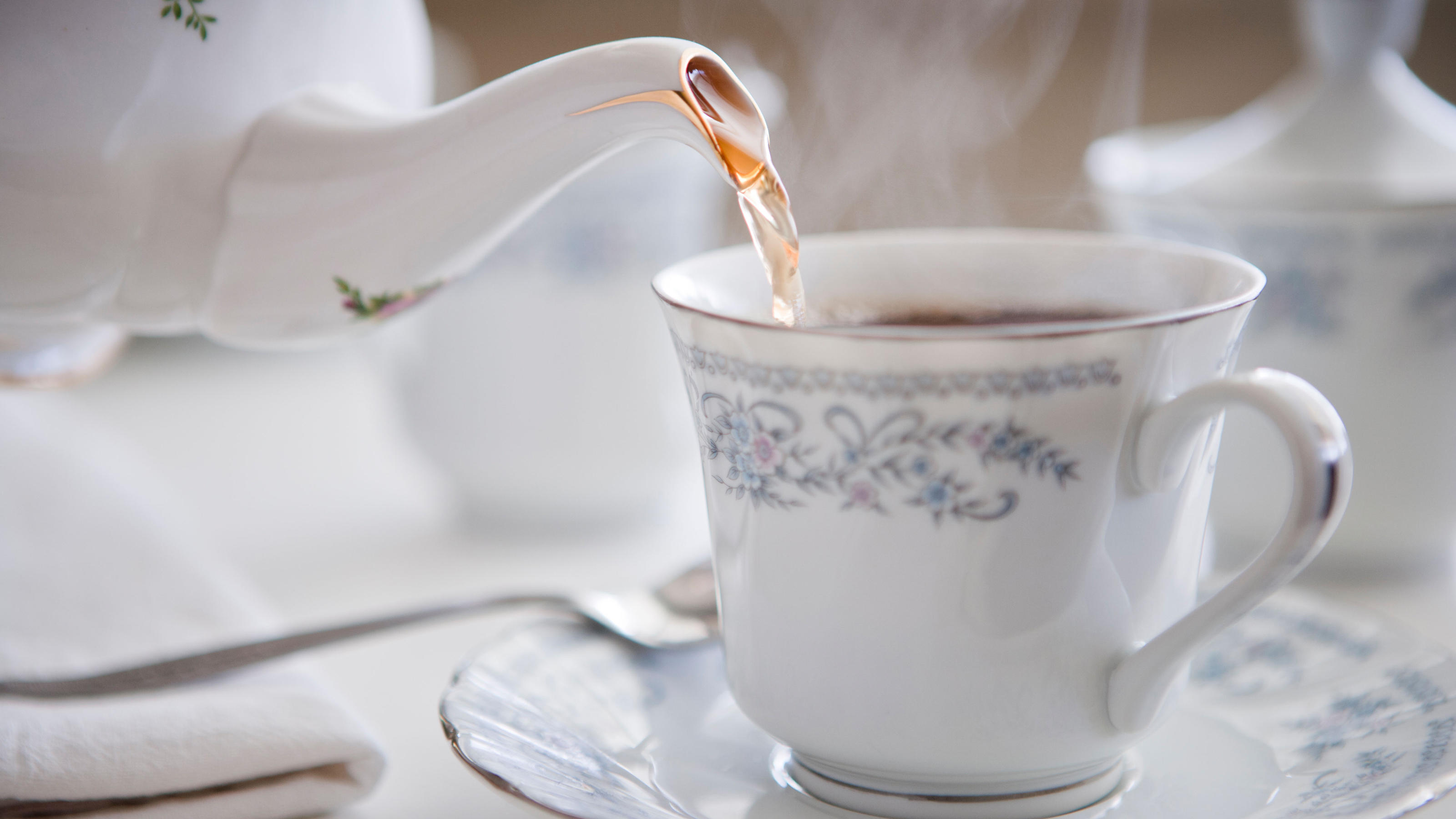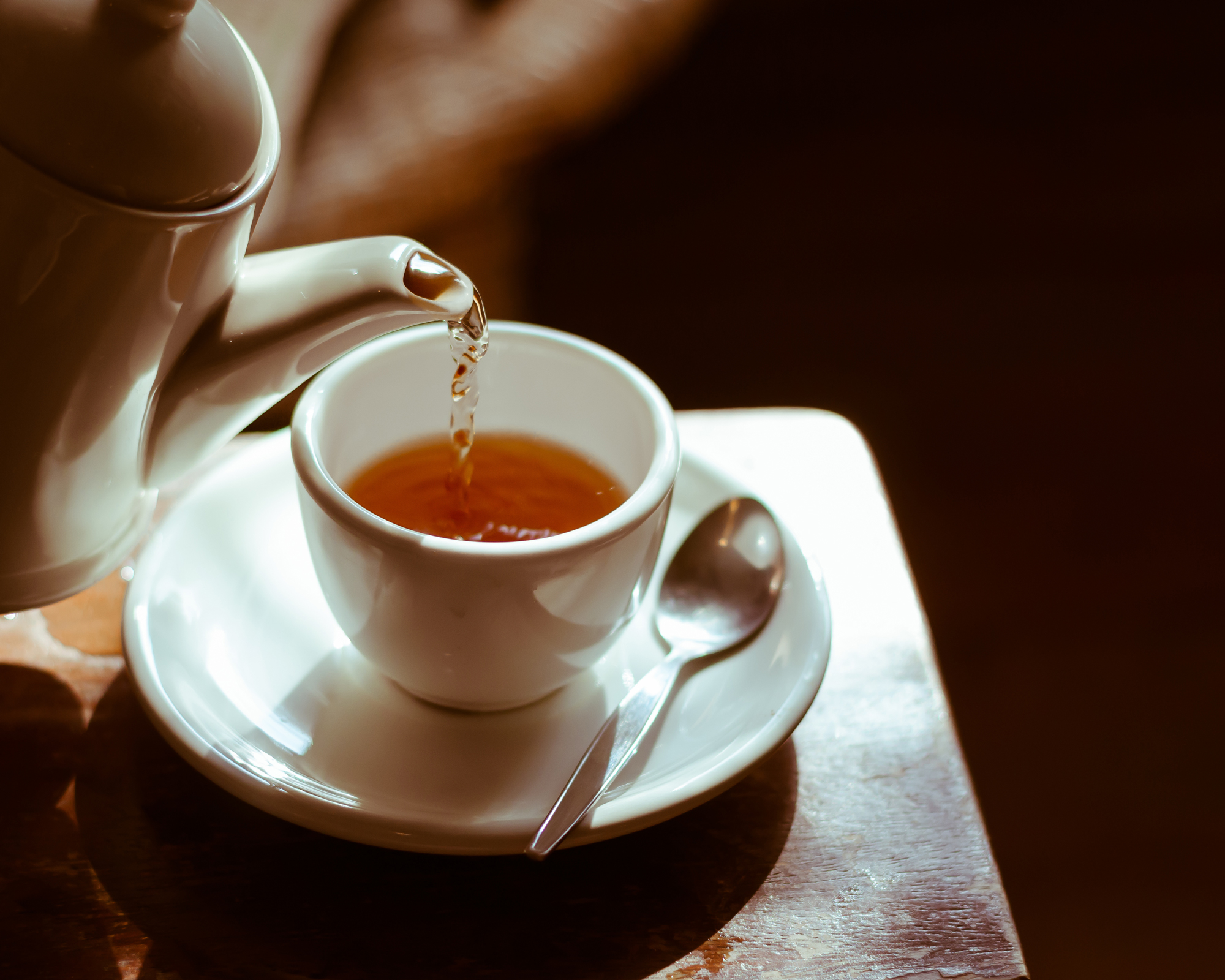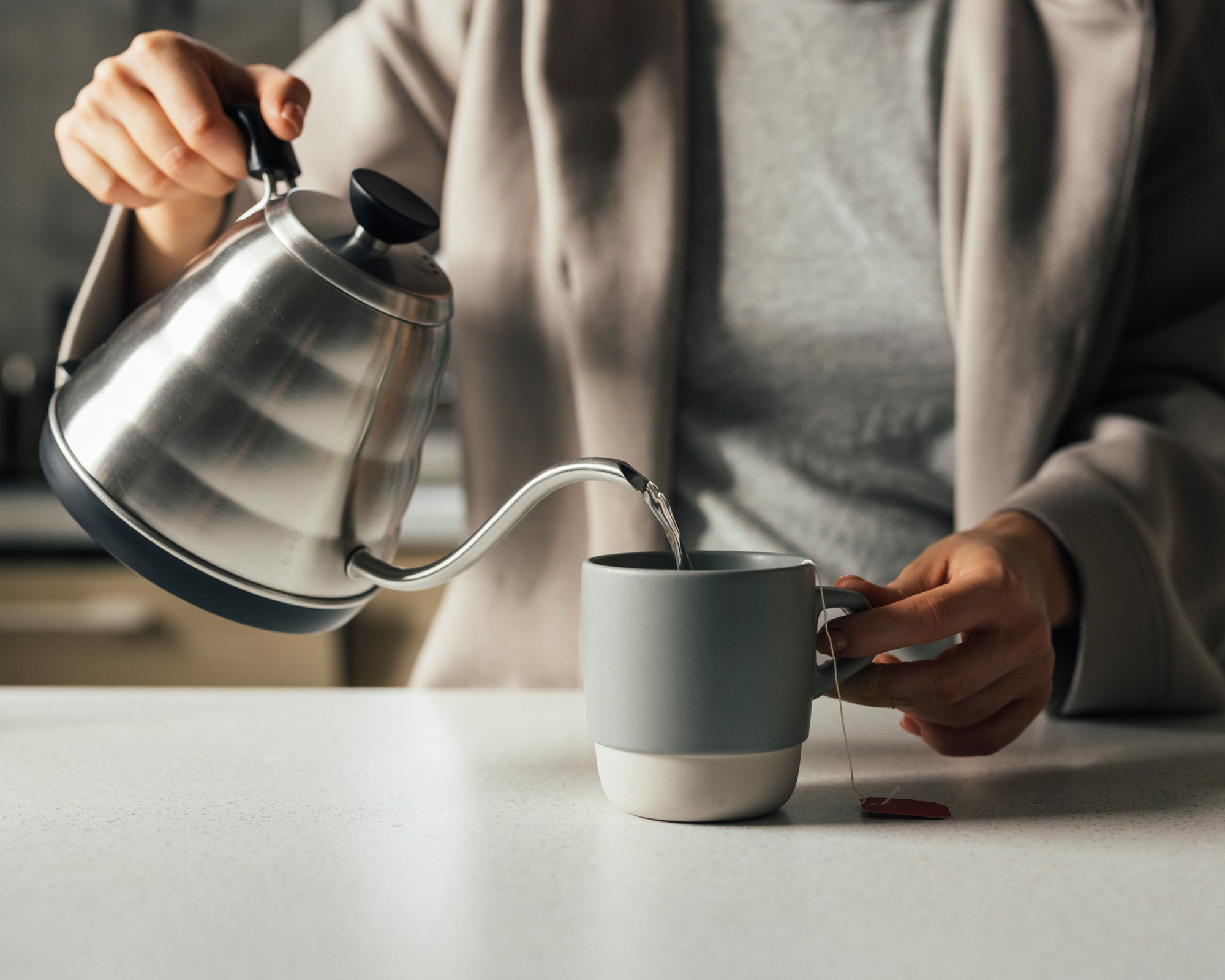How to make the perfect cup of tea
Always wondered how to make a cup of tea fit for royalty? These top tips come from tea experts

If you're asking yourself how to make a cup of tea, we can guess you're either one of two types of people. You have never made tea and want to know how to do it right, or you have been making tea your whole life and your tried and trusted method had come under scrutiny. Boiling water or slightly cooler water? Milk first, or tea first? Should you microwave the water? (Don't even think about it). And so on.
The list of variables is surprisingly long, and some of these things do affect the taste of your cuppa.
And, as a team with staff in the UK, we have some pretty strong feelings about tea.
Of course, buying the best tea kettle you can find is of major importance. Not only will you enjoy making tea more if your kettle is brand new and shiny, but these days, kettles come with all kinds of extra features that help you achieve the perfect cup.
Still, there are some rules and tricks you should know about, whether your kettle is one year old or ten.
How to make a cup of tea
Without further ado, here's how to make a cup of tea the way BRITA water sommelier and hot beverage expert, Samantha Scoles, does it.
1. Fill your kettle
Many experts recommend not using water straight from the tap but filtering it first. Using a filter 'removes unwanted tastes and odors from water, and rebalances the minerals to let the true taste of the tea shine.'
Get small space home decor ideas, celeb inspiration, DIY tips and more, straight to your inbox!
Don't have a water filter? Consider getting a kettle with a built-in water filter.
Sebastian Michaelis, Master Tea Blender at Tetley, also advises against re-boiling any water left in the kettle, and to 'only use the water you need to save energy!'
2. Fill a teapot with boiled water
The water temperature you need will depend on the type of tea you want to make. Scoles recommends measuring the temperature 'using a kitchen thermometer to check that it is 158°F (70°C) – for green tea – and 200°F (95°C-98°C) for black tea. If it is too hot, leave it to cool down for a minute or so.'
Water that is too hot will scold the tea, ruining the delicate flavors. Not hot enough and you don't get the best infusion.
3. Let you tea infuse
This is a crucial step. The recommended infusion times are 2–3 minutes for green tea and medium-leaf black teas (including tea bags), and 3–5 minutes for black large leaf tea.
Michaelis likes to 'give the teabag a little stir to allow the leaves to infuse properly' but also says: 'don’t abuse the poor fellow; I brew for 2–3 minutes to allow the tea to infuse properly before adding milk.' If you over brew your tea it will taste quite bitter.
As Scoles explains, 'the bitter components in tea are soluble in boiling water and, when brewed for too long, they are drawn out quickly into the water which can overwhelm the subtly sweet and aromatic character of the tea.'
If you are making a caffeine-free herbal infusion, such as fruit, herbal, or rooibos tea, you can cover with boiling water and infuse for 5–7 mins.
If your tea is flaking in your cup when you pour it or is a murky color, it's most likely been overbrewed. Black tea should be a rich, golden color; green tea should still be a pleasant green or light yellow color.
4. Add milk (if you want it)
Yep, the milk goes in last. You may have heard that milk traditionally goes in first, but, as Michaelis explains, this goes back to the time when everyone made tea in porcelain teapots: 'legend has it that milk was poured into fine bone China cups to stop the delicate porcelain cracking when pouring hot tea from a pot. Not as many people boil tea in a pot today, and even fewer pour tea into fancy bone China, so the argument is mute.'
However, Michaelis cautions against pouring milk onto a teabag before pouring on your boiling water to brew. 'This will drop the temperature of the water and your tea will taste under brewed and frankly nasty. I personally do pour milk into my cups when brewing tea in a pot, but it’s just habit and it saves me washing up a spoon!'

Should tea for two be made in a teapot?
Yes, there is some sense in using a teapot if you're making tea for multiple people. Michaelis says that he tends to 'use a teapot for two or more people when I’m at home. It allows the teabag to move around more and produces a fully flavoured tea. Using a pot is also a bit of a ceremony. I enjoy the little extra effort when you’ve got guests, and you’ll usually have some extra for a top up.
If you are usually a coffee drinker and don't have tea as often, did you know you can also use a French press to make tea? Simply add a teaspoon of loose leaf tea per cup, fill with water, put the lid on and leave to steep for the advised length of time before plunging. Try to pour the tea fairly soon though to avoid leaving it stewing.
Top tip: 'When you're using a teapot, it’s really important to heat the pot before brewing your tea. If you don’t, the thick porcelain will reduce the temperature of the boiling water quickly and your tea won’t brew as well and you end up with dishwater. I add a little extra water to the kettle to pour into the pot before it boils to sloosh around the pot.'

Should I add milk to herbal tea?
If you're new to the world of herbal teas, this bit can be confusing. Should you add milk to, say, a rooibos or an oolong? Some of them taste as rich and robust as black teas, so it would make sense to at least try them with milk.
However, Erica Moore, founder of eteaket tea, tells us that 'green, oolong, white, rooibos and herb/fruit infusions are designed to be drunk without milk. It you do decided to add milk though, it all boils down to heat. Tea needs the hot water to brew properly so if you add milk while it’s brewing you’ll be cooling things down too much. So if you’re brewing in a mug, add the milk after the tea has brewed. If you’re brewing in a pot then it doesn’t matter what order you put the milk in cause the tea will be nicely brewed already (as long as you’ve left it long enough!)'
Ultimately, it's completely up to you: try it both ways and see which way you prefer!
Making tea: top tips
Moore has a few other tips to help you achieve the perfect cuppa:
- Use fresh tea. Tea is a natural product and will have a best before date; try and consume before this date.
- Store your tea in an airtight container at room temperature and out of direct sunlight.
- Brewing tea is all about giving the tea room to breathe and letting the leaves unfurl. Choose a good tea press, filter or infuser which allows this.
- Always remove or separate the leaves from the liquid once the tea has been brewed for the recommended time, otherwise the tea will stew and will taste bitter.
Enjoy! ☕️
Anna is a professional writer with many years of experience. She has a passion for contemporary home decor and gardening. She covers a range of topics, from practical advice to interior and garden design.